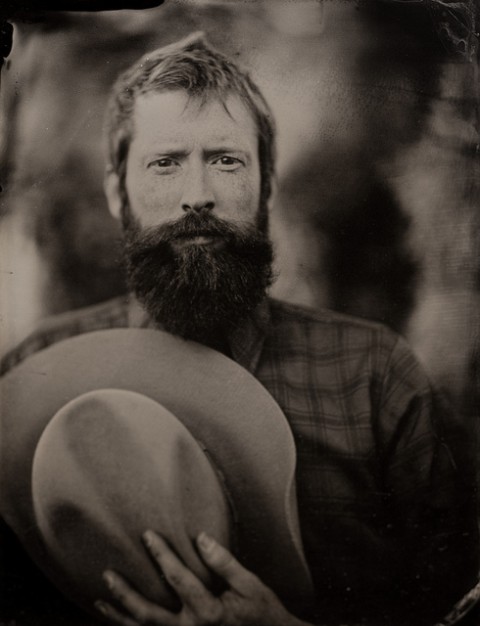Award-winning filmmaker Matt Morris appreciates craft, hard work and people who just show up for each other.
His Emmy-nominated film Pickin’ and Trimmin’ follows the men who cut hair and play bluegrass music together at Drexel’s barbershop in North Carolina. In Mr. Happy Man, an 88-year-old man talks about the hours he spends every morning greeting Bermuda’s commuters as they endure traffic.
The subject of his most recent work came to him in a round-about way, but features the same careful, affectionate filmmaking of his other films. American Tintype chronicles the process of photographer Harry Taylor, who discovered a passion for the Civil War-era “wet plate” photography.
Taylor, based in Wilmington, North Carolina, specializes in tintypes and ambrotypes. He makes them with the same big cameras and messy chemicals used during the late 1800s. At that time, the process produced a whole new layer of detail than earlier techniques had done, and allowed for an infinite number of prints to be made.
Time consuming, laborious and unpredictable, the process requires the photographer to use a portable dark room when shooting outside of the studio. Tin photographic plates are coated with collodion emulsion. (The technique is also called collodion process. There’s a nice tutorial here.) The plate must be coated, exposed and developed within fifteen minutes, before the collodion loses its sensitivity. It’s an inconvenient system, especially by today’s standards, but it pleases Taylor immensely as it forces both him and his subjects to slow down. You can view some of Taylor’s images here.
Morris allows Taylor to speak for himself in the four-minute documentary, letting the camera linger on Taylor’s wood and metal equipment, the dreaminess of his images and on Taylor’s own observations about how long-exposure photography reveals more of the subject’s thoughts. Even the flaws are interesting.
Make a point to notice the music. Morris approached composer Hanan Townshend, known for the scores he composed for director Terrence Malick. Morris blogs about the process of recording American Tintype’s soundtrack at Marin County’s Skywalker Sound—a fun little peek behind the scenes.
Kate Rix writes about digital media and education. Read more of her work at and thenifty.blogspot.com.



Absolutely beautiful — from the craft to the final product!